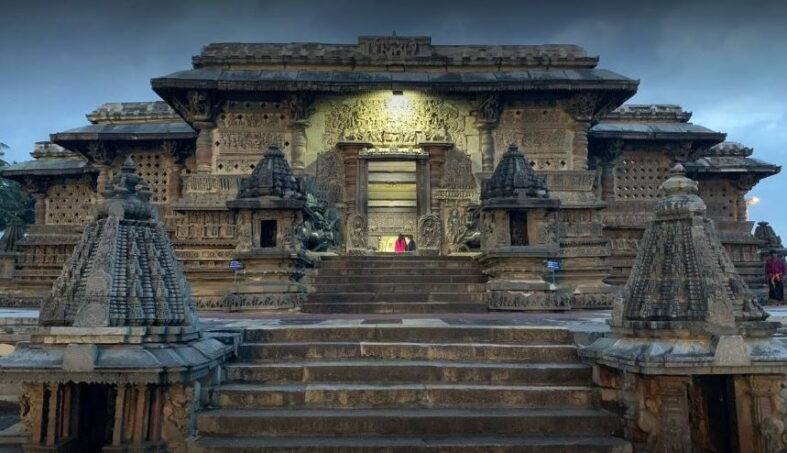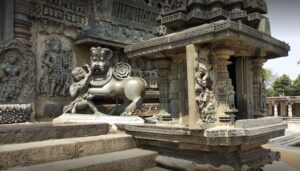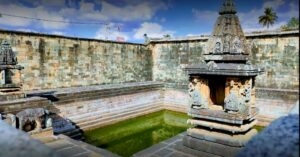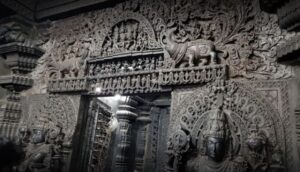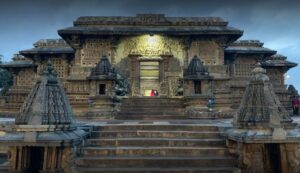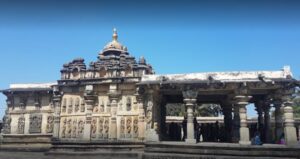Belur Chennakeshava Temple :
The Belur Chennakeshava Temple, also known as the Keshava, Kesava, or Vijayanarayana Temple of Belur, is a 12th-century Hindu temple in Karnataka’s Hassan district. Belur Temple was built in 1117 CE on the banks of the Yagachi River in Belur, also known as Velapura, an early Hoysala Empire capital. It was commissioned by King Vishnuvardhana. The Belur Chennakeshava Temple was constructed over three generations and took 103 years to complete. Throughout its history, it has been repeatedly damaged and plundered during wars, and it has been rebuilt and repaired numerous times. It is 35 kilometers from Hassan and about 200 kilometers from Bengaluru.
Chennakesava is a manifestation of the Hindu god Vishnu. The chennakesava temple belur is dedicated to Vishnu and has been a functioning Hindu temple since its establishment. It is described reverently in medieval Hindu texts and is still an important pilgrimage site in Vaishnavism. The architecture, sculptures, reliefs, friezes, iconography, inscriptions, and history of the temple are all noteworthy. Through numerous friezes, the temple artwork depicts scenes of secular life in the 12th century, dancers and musicians, as well as a pictorial narration of Hindu texts such as the Ramayana, Mahabharata, and Puranas. Chennakeshwara Temple Belur is a Vaishnava temple with many Shaivism and Shaktism themes, as well as images of a Jina from Jainism and the Buddha from Buddhism. The Chennakeshava temple reflects artistic, cultural, and theological perspectives in 12th century South India under Hoysala Empire rule.
Belur Temple History :
The Hoysala period of South Indian history lasted from around 1000 CE to 1346 CE. During this time, they constructed approximately 1,500 temples in 958 centers. In old inscriptions and medieval texts, Belur is referred to as Beluhur, Velur, or Velapura. It was the Hoysala kings’ first capital. In later inscriptions, the Hoysalas refer to the city as “earthly Vaikuntha” (Vishnu’s abode) and “dakshina Varanasi” (Hindus’ southern holy city).
The construction of the Chennakeshava temple in Belur took 103 years. Vishnuvardhana relocated his capital to Dvarasamudra (now Halebidu), where he began work on the Hoysaleswara Temple, dedicated to Shiva. Its construction lasted until his death in 1140 CE. His descendants carried on his legacy, completing the Hoysaleswara Temple in 1150 CE and the Chennakesava Temple in Somanathapura in 1258 CE. The Hoysalas employed many notable architects and artisans who established a new architectural tradition known as the Karnata Dravida tradition by art critic Adam Hardy.
Belur Temple Architecture :
The Chennakeshava complex at Belur consists of a 443.5 feet by 396 feet court surrounded by a wall with several Hindu temples and minor shrines. The compound is entered from the east via a Gopuram added during the Vijayanagar empire’s repairs. The following temples and monuments can be found within the walled complex:
The main temple is Chennakesava temple, also known as Kesava temple. It is located in the center of the complex, facing east and directly in front of the gopuram. It is 178 feet by 156 feet, including the later improvements. The temple is built on a three-foot-high platform terrace (jagati). The temple honors Vishnu in the form of Kesava.
The Kappe Chennigaraya temple, which measures 124 feet by 105 feet, is located to the south of the Kesava temple. It contains two sanctums, one for Venugopala and the other for Chennigaraya (local popular name of Chennakeshava, Vishnu). The temple is named Kappe Chennigaraya after a local legend in which a Kappe (frog) was discovered near its navel. This smaller temple was built concurrently with the main temple by the queen and is thought to be a smaller version of the main temple.
Under a canopy, a couple stands side by side on a stone slab in the namaste posture. The monument has been damaged.
The Viranarayana temple, which measures 70 feet by 56 feet, is located to the west of the Kesava temple. It is a small but complete temple that includes a navaranga (nine square hall) and a garbha griya (sanctum) with 59 large reliefs on the outer walls. These reliefs honor Vishnu, Shiva, Brahma, Bhairava (angry Shiva), Lakshmi, Parvati, Saraswati, and other deities. Some panels depict the Mahabharata’s Bhima story. The temple was built in the 12th century as well.
Belur Chennakeshava Temple Timings:
The belur temple timings are :
Morning : 7:30 AM to 1:00 PM
Afternoon : 2.30 PM to 7.30 PM
kukke subramanya to belur distance : 2 hr 15 min (94.3 km) via Bandadka – Bengaluru Rd
sakleshpur to belur distance : 50 min (34.6 km) via Belur – Somvarpet Rd
Hassan to Belur distance : 50 min (38.1 km) via Belur Rd
halebidu to belur distance : 24 min (16.8 km) via NH73
chennakesava temple location : Temple Rd, Belur, Karnataka 573115
belur temple contact number : 081772 22218
How to reach belur sri chennakeshava temple :
Via Air : Belur is approximately 130 kilometers from Mangalore Airport, and Bangalore International Airport is approximately 222 kilometers away. The most convenient mode of transportation from airports is by car.
Via Rail : Chikmagalur, which is 22 kilometers away, has the nearest railway station to Belur. Hassan railway station is approximately 32 kilometers from Belur town. There are numerous buses that travel between these towns.
Via Road : The NH75 connects Bangalore city to Belur, which is 220 kilometers away. Traveling from Mysore, the journey is 155 kilometers long via the SH 57. The NH73 connects Mangalore to the coastal city of Mangalore, which is 153 kilometers away. Regular buses run from Hassan, Chikmagalur, Bangalore, Mysore, and Mangalore to Belur.
Belur Chennakeshava Swamy Photos :

